The Art Lover’s Guide to All of AD2023’s Sculpture Spots
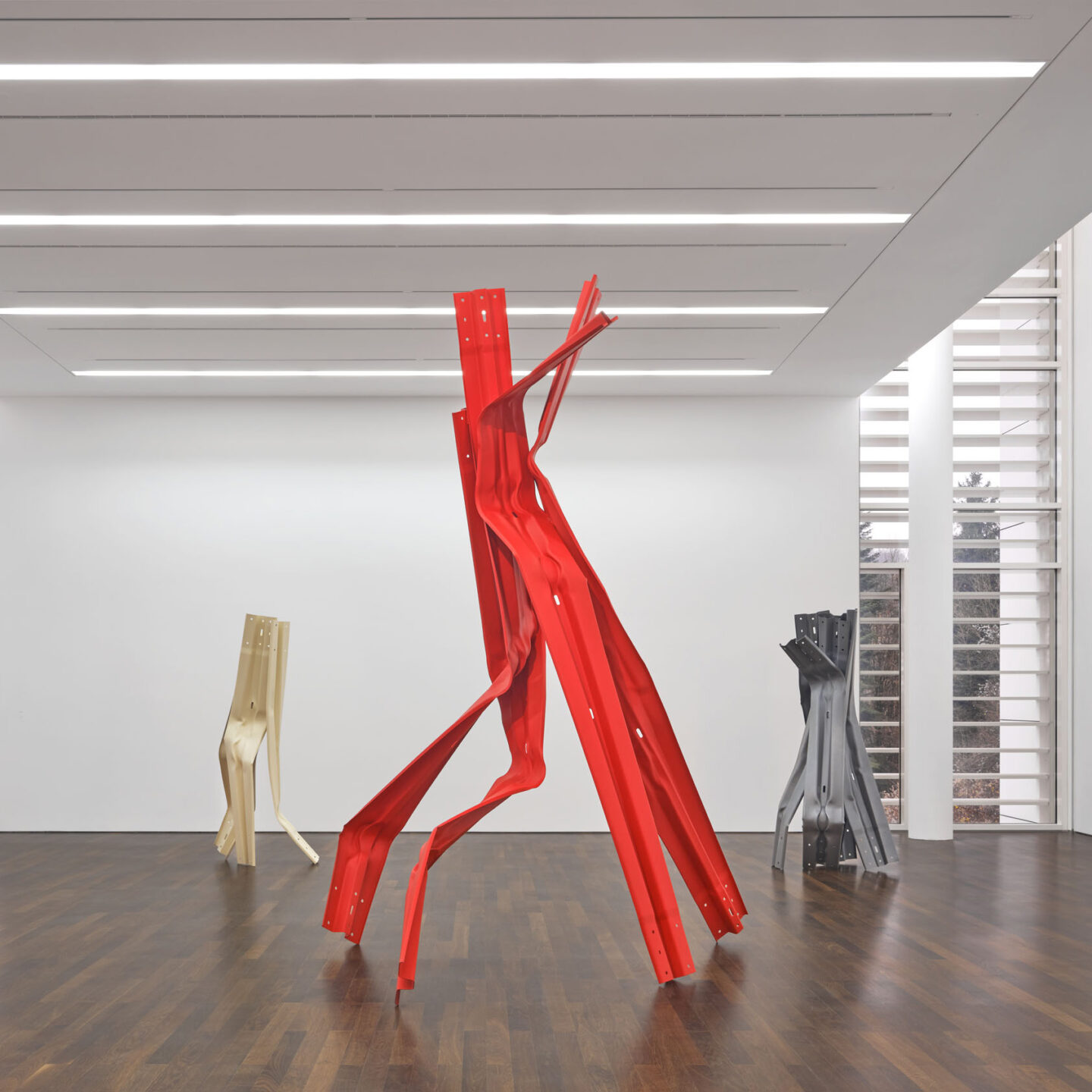

Words: Chris Erik Thomas.
Outstanding sculptural works have always been a cornerstone of Art Düsseldorf. Throughout history, sculpting has been integral to humanity’s embrace of art — from the earliest known works from around 32,000 B.C. to the modern era. And within the contemporary art space, the practice has flourished through a diversity of positions and fresh experimentation.
For the fifth edition of Art Düsseldorf, we allowed galleries to apply for our coveted Sculpture Spaces for the first time ever. After many, many outstanding applications, we are proud to present eight sculptural works by seven artists that offer a diversity of positions on the art form.
As we open the doors to Areal Böhler for Art Düsseldorf 2023 from March 31 through April 2, visitors can look forward to everything from monumental sculptures and meditative ceramic vessels to repurposed antique sculptures transformed into grotesque, twisted shapes.
Whether you’re preparing to wander the halls of the fair or just want more insight as you tune into our live stream, get to know the works and artists we have on view at all of our Sculpture Spots this year.
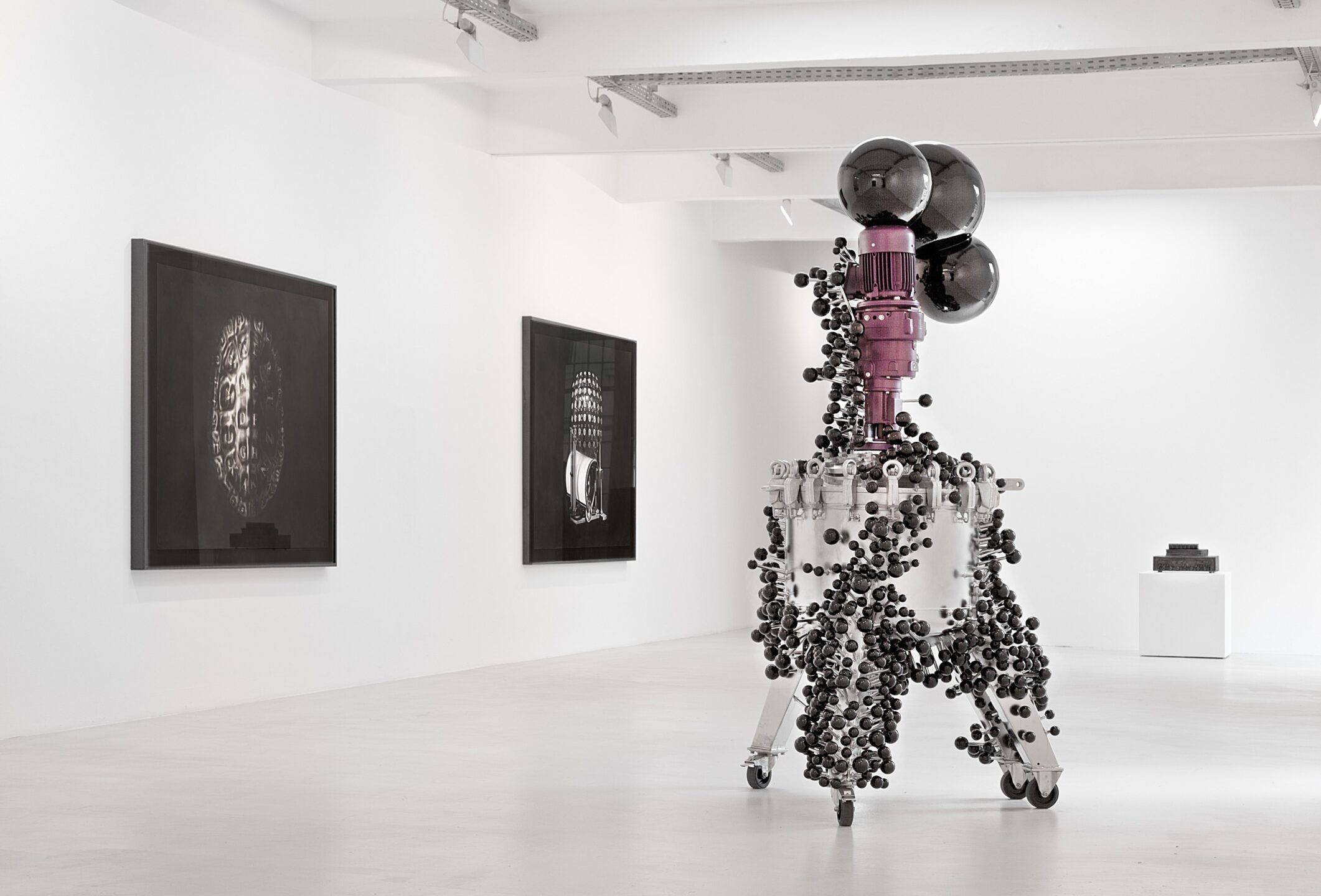
Thomas Feuerstein. "DEEP AND HOT," (2017). 220 x 120 x 110 cm. Stainless Steel, Duroplast. Courtesy Galerie Elisabeth & Klaus Thoman.
You’d be forgiven for thinking that “DEEP AND HOT” was beamed into Areal Böhler from another planet or a future moon colony. The otherworldly sculpture by Thomas Feuerstein — brought to the fair by Galerie Elisabeth & Klaus Thoman — commands attention. Crafted from stainless steel and duroplast, its spheres dot a central base of a pressure reactor and reference the microscopic atoms and molecules that make up our world.
For those familiar with Austrian artist Feuerstein’s oeuvre, including his previous works at Art Düsseldorf, the sight of this scientifically-inspired piece may come as no surprise. The works he’s produced over his decades-long career have always found ways to bring the natural world into his practice through such unique materials as fossilized ammonite, ammonium chloride, rubber, and much more. With his latest work, he continues to showcase his talent for finding the balance between science and art.
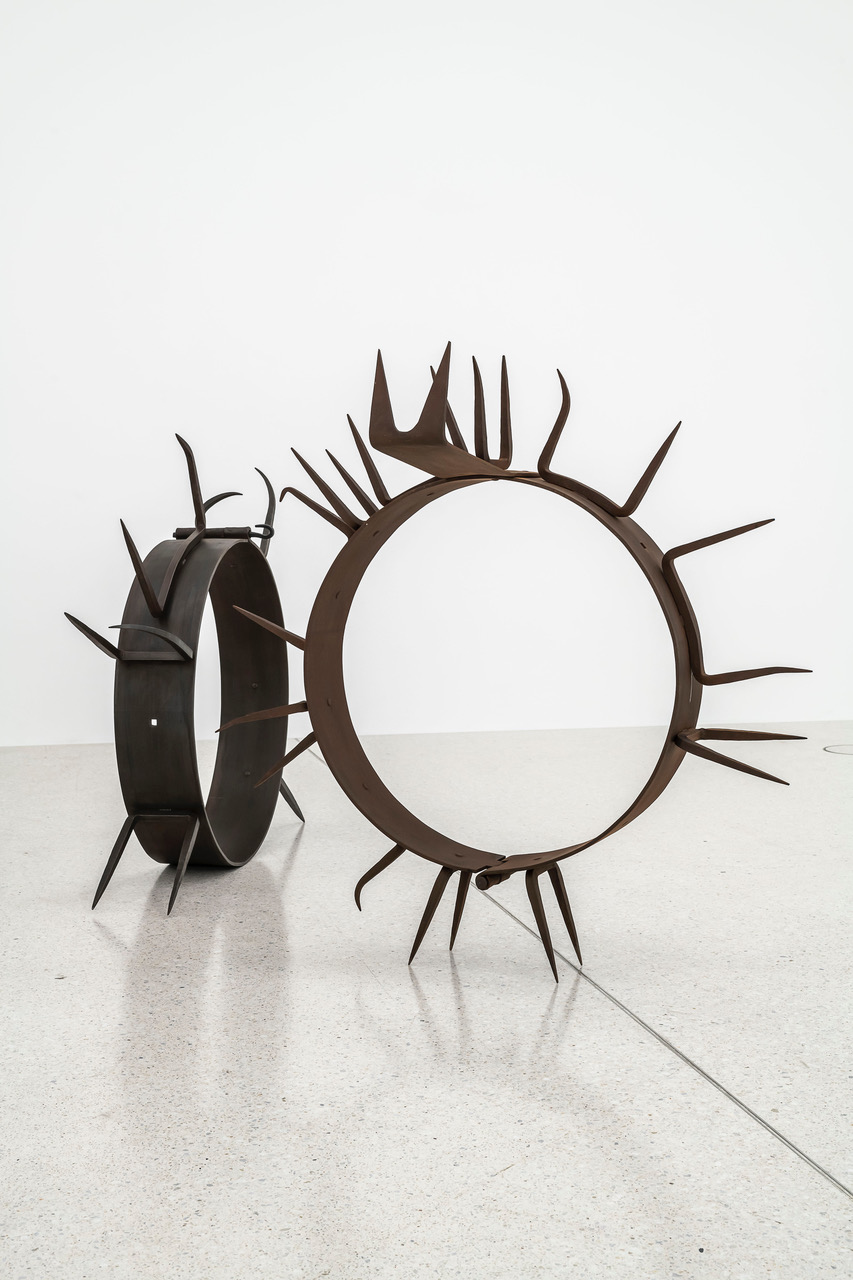
"SPIKED COLLAR I [fin]" (2022) by Eliza Ballesteros. Steel, rust. ø 127 cm. "SPIKED COLLAR III [attached]" (2022). Steel, black finishing. ø 153 cm. Courtesy the artist and fiebach, minninger Cologne.
There’s a foreboding presence to “SPIKED COLLAR I [fin]” and “SPIKED COLLAR III [attached],” two of three works from artist Eliza Ballesteros’ sculptural series. Featured in the final Sculpture Spot as part of gallery fiebach, minninger’s presence in the fair, the ominous, towering pieces are inspired by antique, original guard dog collars. There is a subtle differentiation to each work, with “Spiked Collar I” oxidized with red wine and “SPIKED COLLAR III” black burnished.
Based between Düsseldorf and Cologne, the young artist has already begun carving out a name for herself in the contemporary art space thanks to her conceptual use of objects, texts, and installation. By recontextualizing cultural signifiers in symbols and materials, her oeuvre offers a sharp critique of societal power structures.
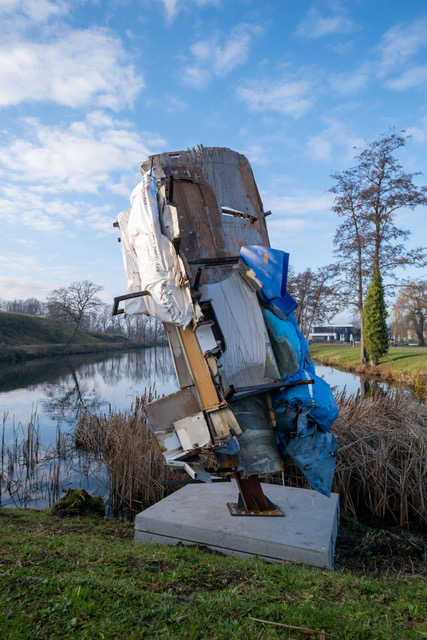
“On Hold #20” (2001) by Peter Buggenhout. Kaltstahlhalle (Hauptachse). H 5.20 x B 3.5 x T 2.5 m. Mixed-Media (Polyester, Plastic, Polyurethane & Metal, free-floating on a steel beam on a concrete pedestal). Courtesy Konrad Fischer Galerie.
A seemingly chaotic mash of polyester, plastic, polyurethane, and metal is held aloft by a singular steel beam in artist Peter Buggenhout’s 2001 work “On Hold #20.” Brought to the fair by the Düsseldorf-based Konrad Fischer Galerie, this hulking work feels like a found object from another era — unearthed and turned inside out to reveal the balanced disorder of its inner workings.
With his towering, abstract sculptures made of such materials as industrial waste, horsehair, and blood, the Belgian artist encourages a rethinking of the very nature of creation. By rooting his pieces in abstraction, he aims to bring the viewer back to the object. It’s this approach of avoiding the bog of symbolism that has captivated audiences and garnered praise throughout the art world.
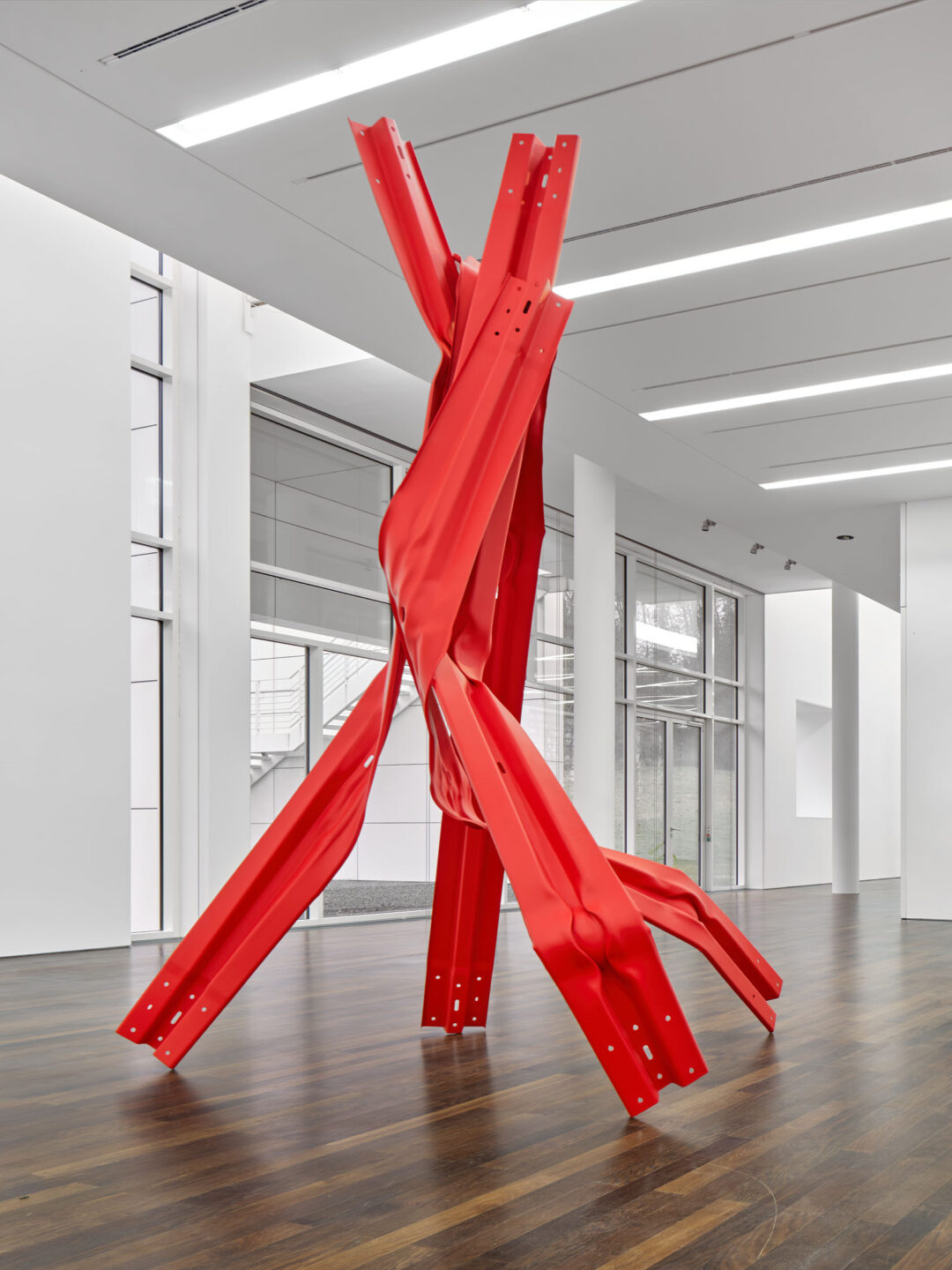
“Vertical Highways A5” (2019) by Bettina Pousttchi. Alte Schmiedhalle (Hauptachse). H 390 x B 237 x T 225 cm. Crash Barriers, Steel. Courtesy Buchmann Galerie.
As part of Buchmann Galerie’s presence at the fair, the Berlin-based gallery has chosen the sculptural piece “Vertical Highways A5” by Bettina Pousttchi, one of Germany’s most acclaimed contemporary artists. As the largest sculpture to date from her series of repurposed crash barriers, the work brings an anthropomorphic quality to the harsh steel that touches on the architectural references common in the artist’s work.
Since her breakout installation, “Echo,” at Berlin’s Temporäre Kunsthalle at Schlossplatz, Pousttchi has garnered international acclaim for her sculptural and photographic works. The artist’s impressive sculptural oeuvre has particularly drawn praise for the new life she breathes into structures taken from public spaces, including street bollards, crowd barriers, and bike racks.
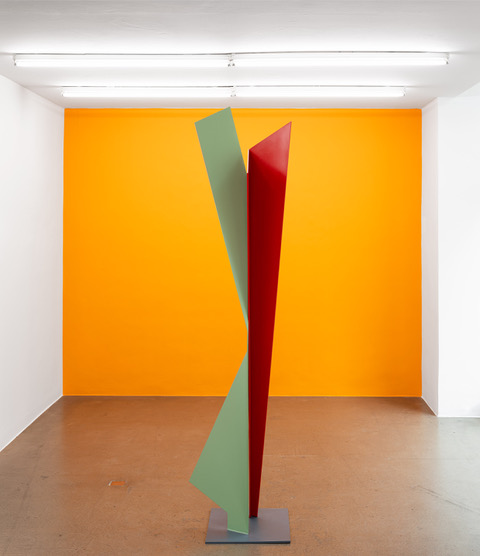
"Gilded Palace of Sin” (2022) by Katja Strunz. Kaltstahlhalle (Skulpturengruppe um SOLO PROJECTS). H 265 x B 65 x T 50 cm. Painted Steel. Courtesy Krobath Wien.
There is a certain understated energy to German artist Katja Strunz’s recent work, “Gilded Palace of Sin.” Using painted, folded steel, the artist tackles such existential themes as the complexity of human existence in relation to the passage of time.
For the artist, who is represented at the fair by Vienna’s Galerie Krobath, inspiration for her work is rooted in dismantling the idea of historic trauma being a symptom situated in the past. The idea of modernity is thus translated and twisted to accompany her diachronic references to the past and present; specific discontinuities and disruption have become the key features of her oeuvre.
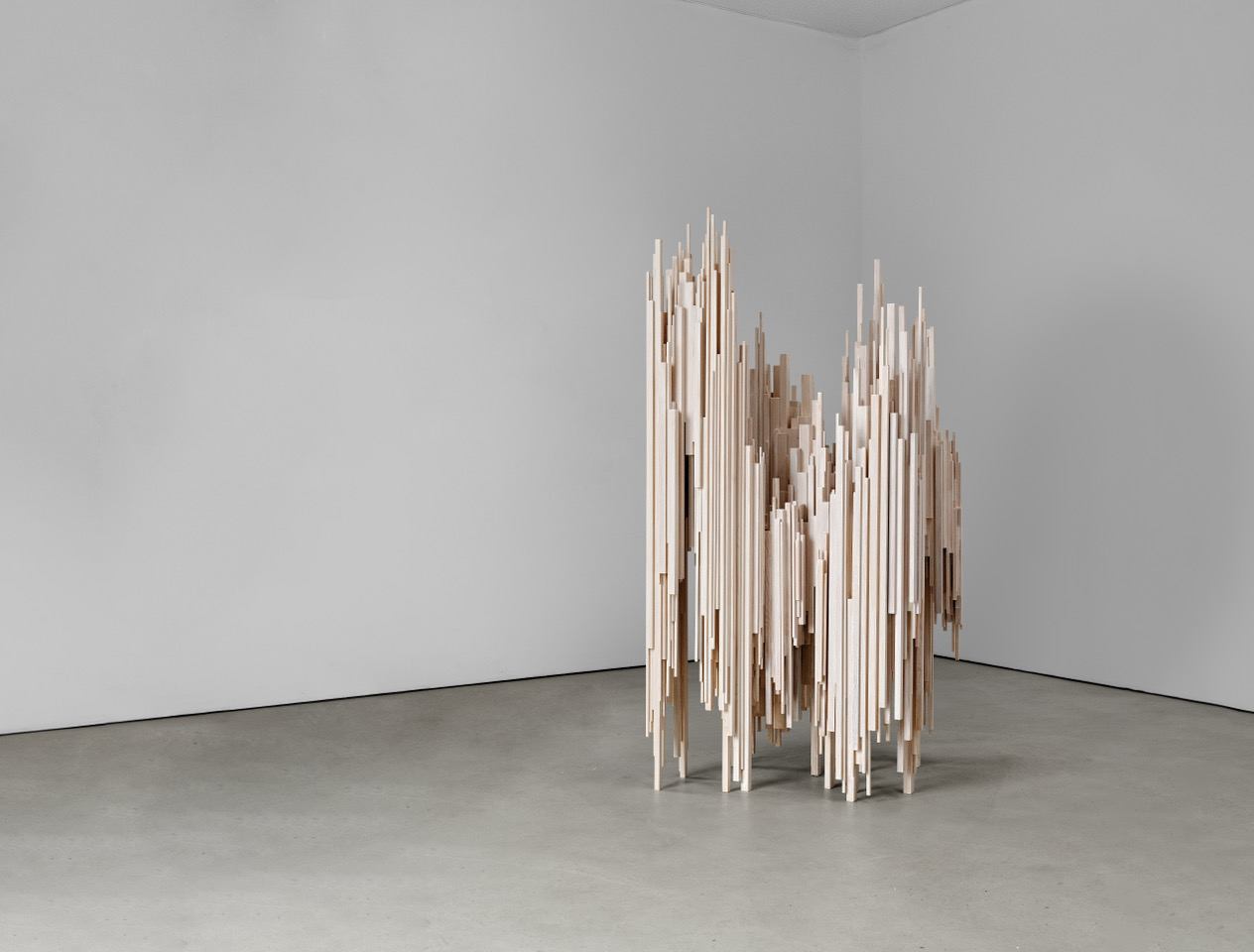
“Protokoll einer Sehnsucht” (2023) by Kavata Mbiti. Kaltstahlhalle (Skulpturengruppe um SOLO PROJECTS). H 210cm X B 90 cm X T 120cm. Wood. Courtesy Galerie Jochen Hempel.
Choosing a work by up-and-coming artist Kavata Mbiti for their sculpture spot was a natural fit for the Berlin-based Galerie Jochen Hempel. Crafted from a mix of wooden sticks and strips, wax, and pigment, her piece commands attention as it seems to sink down and stretch skyward simultaneously. The result is what Mbiti calls a visual notation, which resembles a towering cardiogram measuring the space it inhabits.
For Mbiti, the question of “what remains” is central to her practice. The Swiss-born, Berlin-based artist has steadily built up her talents in sculpting, drawing, and performance over the past two decades — winning multiple prizes and grants for her work as a young contemporary artist.
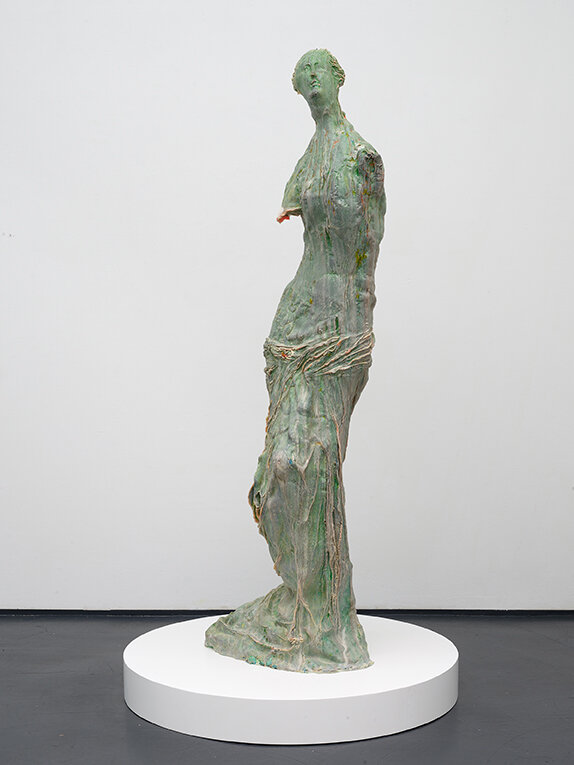
“In funny memory of ... Venus de Milo #1” (2021) by Bas de Wit. Kaltstahlhalle (Skulpturengruppe um SOLO PROJECTS). H 202 x B 63 x T 64 cm. Resin, Fiberglass, Pigments. Courtesy Phillip von Rosen Galerie.
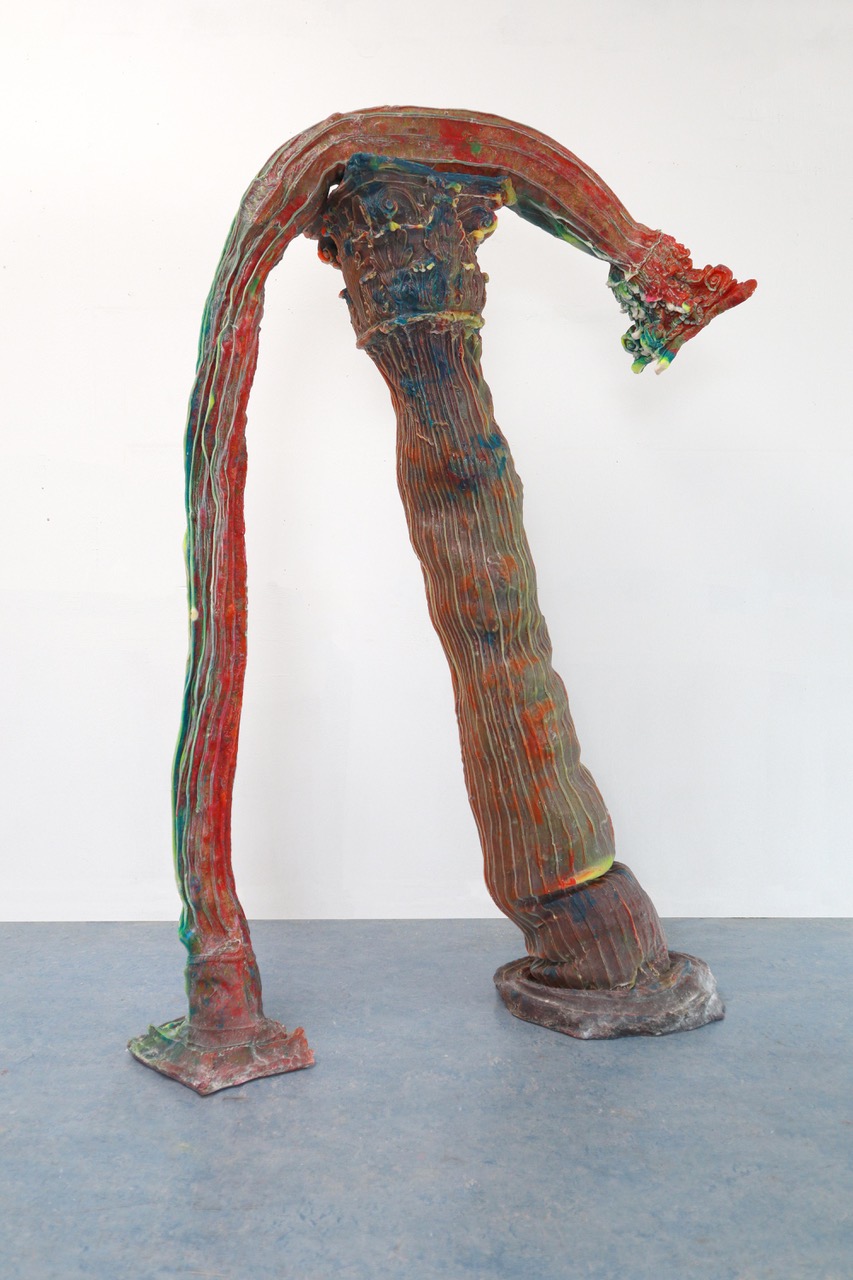
“Grow with the flow #13 & #14” (2022) by Bas de Wit. Kaltstahlhalle (Skulpturengruppe um SOLO PROJECTS). H 210 x B 150 x T 70 cm Resin, Fiberglass, Pigments. Courtesy Phillip von Rosen Galerie.
For this year’s fair, Phillip von Rosen Galerie will present two unique sculptures by Dutch artist Bas de Wit. The painter and sculptor’s two works — “In funny memory of … Venus de Milo #1” (2021) and “Grow with the flow #13 & #14” (2022) — are a testament to his skill in the art form. Steeped in historical references to both the Hellenistic era and columns of antiquity, these contemporary works distort and rework art history to craft works that are firmly grounded in modernity.
The artist has spent decades honing his talents through the creation of his strange, surreal objects that have deep historical roots. Through a process of distortion that often turns his sculptures into grotesque, twisting shapes, the pieces that de Wit creates have captivated viewers and offered a unique insight into his imagination.
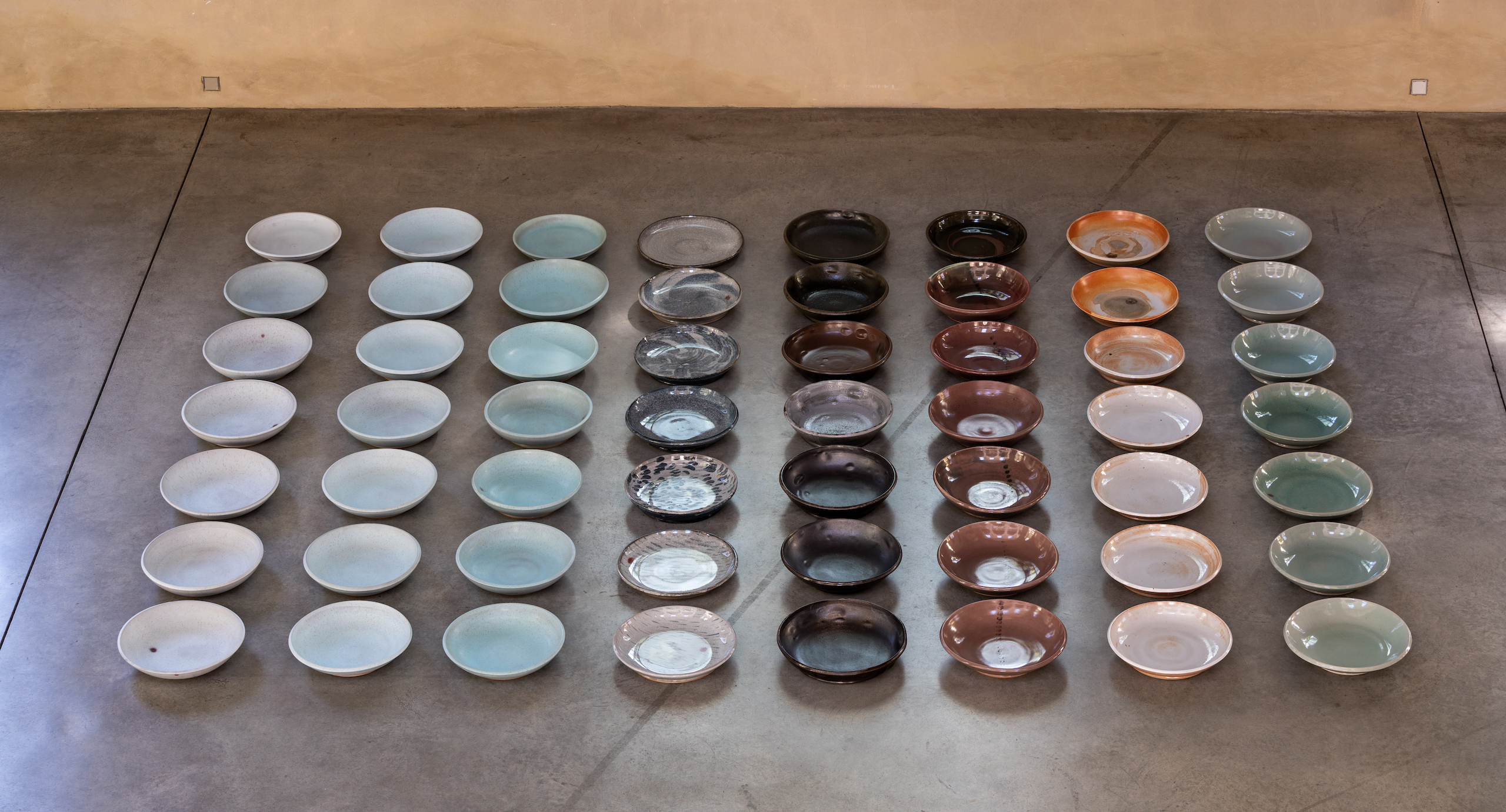
“Seven Times Seven” (2022) by Young-Jae Lee. Kaltstahlhalle (Skulpturengruppe um SOLO PROJECTS). 50-60 cm. Ceramics, stoneware. Courtesy Jahn und Jahn.
For Art Düsseldorf 2023, the Munich- and Lisbon-based gallery Jahn und Jahn has chosen to show “Sieben Mal Sieben” (2022) by ceramicist Young-Jae Lee. The work continues her unique staging practice of placing bowls and vases directly on the floor and takes its name from the inclusion of seven “grief bowls,” or bowls that had their glazing fail during the second firing of the kiln.
After coming to Germany from Seoul in 1972, the artist’s exploration of ceramic art led her to study under such artists as Christine Tappermann, Margot Münster, and Erwin Schutzbach. She has managed the renowned Margaretenhöhe Ceramics Workshop in Essen since 1986 and, over the decades, Lee’s mastery of the form — and her personal admiration for the ceramics of the Goryeo (918-1392) and Joseon (1392-1910) dynasties — has brought her international recognition and countless awards for her impressive oeuvre.
Chris Erik Thomas is the Digital Editor of Art Düsseldorf. They work as a freelance writer and editor in Berlin and focus primarily on culture, art, and media. Their work can also be seen in Highsnobiety, The Face Magazine, and other publications.